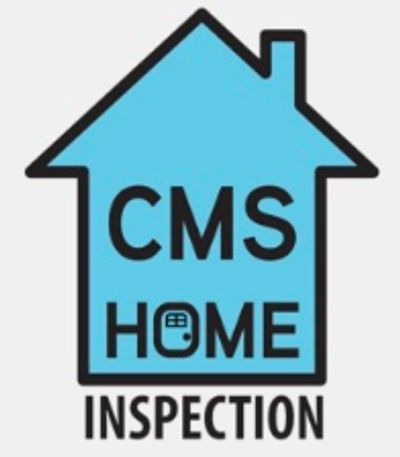Radon Control
Radon Control Amendment
On March 7, 2023, Rhode Island General Law (R.I.G.L.) amended Chapters 23-61, sections 23-61-2, 23-61-3 and 23-61-4 entitled "Radon Control" introducing new protocols for radon control aimed at enhancing health and safety measures.
In accordance with R.I.G.L., landlords are required to conduct periodical radon testing and disclose radon hazards in dwelling Unit(s) to tenants. The radon disclosure should contain the property address, Unit number, radon test date, radon level, and individual or company that performed the radon testing. The tenant(s) and landlord are to sign the radon disclosure form to acknowledge the status of radon in the Unit.
To ensure compliance with R.I.G.L., radon disclosures referencing the radon test results need to be submitted with lease agreements to the Executive Board for review and approval in advance of execution, including new lease agreements, extensions, or renewals.
While the Association’s condominium documents require Unit Owners to maintain their Unit(s), radon testing for Owner Occupied Units is currently optional and not mandatory under R.I.G.L.
Radon Testing

Preferred Vendor
CMS Home Inspection has been selected as the Association’s preferred vendor. This decision is based on their outstanding qualifications, commitment to quality, excellent customer service, and competitive pricing.
Test Duration
The Radon Inspector will set up a Continuous Radon Monitor (CRM) in the Unit, a process which takes about 5 minutes. The device will remain in the Unit for a minimum of 48 hours, during which no resident monitoring is required.
Pricing
The price for radon testing is $150 per Unit, which is subject to change. Discounts are available for Unit Owners that own multiple Units.
Schedule a Radon Test
Radon test may be scheduled in the following ways:
- Book online
- Call or text (401) 830-0966
- Email info@cmshomeinspection.com
Preparations Before and During Testing
To help ensure valid test results, it is important to prioritize preparing suitable testing conditions in the Unit before and during the testing period. Closed House Conditions are needed to ensure that test results accurately reflect the actual radon levels in the Unit. Buildings and Units may still be occupied and accessed as usual during the testing period.
The following are the required preparations before and during the testing period:
- Ensure all exterior doors and windows are closed for at least 12 hours prior to commencing the test and keep them closed throughout the entire testing period, except for regular entry and exit.
- Operate dehumidifiers, heating, and cooling systems as usual.
- Minimize the use of vents or exhaust fans during the testing period.
- Avoid touching or relocating the CRM device before, during, or after the testing period.
Radon Test Results
Radon testing was completed in the buildings on May 1, 2024, using a Continuous Radon Monitor (CRM) testing device that was left in each first-floor Unit for a minimum of 48 hours.
The radon test results provide the average and maximum radon levels recorded in picocuries per liter (pCi/L), as outlined below:
Building #1 Average pCi/L Maximum pCi/L Comments
Unit 1 1.3 3.1 Test Invalid: Unauthorized tampering of CRM device
Unit 2 1.3 2.9
Unit 7 0.7 1.9
Unit 8 1.9 4.1
Unit 13 0.5 1.4
Unit 14 1.9 5.6
Unit 19 1.1 3.2
Unit 20 1.0 2.5
Unit 25 2.2 4.1
Unit 26 1.0 2.5
Unit 31 0.9 1.8
Unit 32 1.2 2.5 Test Invalid: Open house conditions
Unit 37 0.7 2.2
Unit 38 0.7 2.3
Unit 43 2.0 4.3
Unit 44 5.0 9.9
Unit 49 2.0 4.0
Unit 50 2.3 4.9
Radon Mitigation
The U.S. Environmental Protection Agency (EPA) offers guidance on the action level for radon in response to these findings:
“EPA recommends homes be fixed if the radon level is 4 pCi/L (picocuries per liter) or more. Because there is no known safe level of exposure to radon, EPA also recommends that Americans consider fixing their home for radon levels between 2 pCi/L and 4 pCi/L.
The average indoor radon concentration for America’s homes is about 1.3 pCi/L. It is upon this national average indoor level that EPA based its estimate of 21,000 radon-related lung cancers a year. The average concentration of radon in outdoor air is .4 pCi/L or 1/10th of EPA's 4 pCi/L action level.”
According to the radon test results, 7 Units across the three buildings registered radon levels equal to or exceeding 4 pCi/L, which constitutes 39% of the first-floor Units that surpassed the maximum base action level. Moreover, 5 Units across Buildings #1 and #2 exhibited average radon levels of 2.0 pCi/L or higher, representing 28% of the first-floor Units surpassing the minimum base action level.
Although the EPA recommends radon mitigation to a level below 4.0 pCi/L, they do suggest striving for a level below 2.0 pCi/L. The EPA’s action level serves as a guideline for determining when radon concentrations in indoor environments are considered elevated and radon mitigation measures are recommended to reduce radon concentrations in indoor environments along with associated health risks. Additionally, the EPA suggests enlisting the services of a qualified company to install a radon mitigation system to help reduce radon levels.
Based on this recommendation, the radon test results have been forwarded to certified radon mitigation professionals to devise a suitable mitigation strategy tailored to the test results and the unique conditions of each building. Once the radon mitigation plans are received, they will be promptly shared with the Association. The goal is to prioritize the health, safety, and regulatory compliance of the Association.
To increase awareness, this news story highlights the dangers of radon and emphasizes the importance of taking essential safety precautions to protect the health of residents.
This website uses cookies.
We use cookies to analyze website traffic and optimize your website experience. By accepting our use of cookies, your data will be aggregated with all other user data.